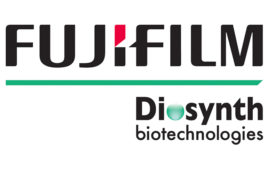Increased efficiency with disposable bioreactors
Increasing efficiency and decreasing time-to-market are key factors for scientists in R&D and biopharmaceutical manufacturing, and are driving forces in the continuing adoption of disposable/single-use technologies begun in 1999 with the introduction of products by Wave Biotech. This technology, now part of the ReadyToProcess™ bioprocessing portfolio from GE Healthcare, includes disposable solutions for many steps in cell culture, clarification and purification.
From research to large-scale manufacture, the use of disposables provides many advantages over conventional technologies. Single-use bioreactors, columns and tubing can be simply disposed of after use and replaced with new, pre-sterilized components, eliminating the risk of cross-contamination between batches. The reduction of non-productive activities such as changeover times between production campaigns, cleaning, and cleaning validation can also contribute to the streamlining of operations.
This article explores the benefits of using a disposable bioreactor, such as the WAVE Bioreactor™/Cellbag™ from GE Healthcare, over traditional methods. Disposable bioreactor systems have helped to simplify the production of cell-derived products using animal, insect, plant, microbial, and virus culture for commercial and R&D applications. This is just one example of the cost-effective and flexible process capabilities offered by disposable systems.
The components of disposable bioreactor systems
The WAVE Bioreactor consists of two components; a disposable Cellbag, in which the cells and media are contained, and the rocker, designed to inflate and maintain optimum cell culture conditions within the Cellbag. The unique rocking motion provides effective oxygen transfer and mixing, accomplished by the principle of wave-induced agitation. This wave action generates free surface for bubble-free oxygen transfer from the headspace of the bioreactor, and also mixes the fluid, thus suspending cells and particles. This design eliminates the need for mechanical mixing or gas sparging, both of which can introduce shear damage to cell cultures. Air is continuously purged through the bioreactor headspace in order to supply oxygen and remove metabolic waste gases.
The gamma sterilized bags include filters, tubes and all necessary fittings, and are available ready for use in various sizes for 0.1 to 500 liters of culture volume. This type of bioreactor system is easy to operate and doesn’t require complex piping or sterilization sequences, which also saves time and significant labor costs for the user. The pre-sterilized Cellbag is simply placed on the rocker, filled with media, and cells expressing the protein of interest are added. Installation and validation is accomplished in a fraction of the time of conventional stainless steel bioreactors. The WAVE Bioreactor is the essence of Lean process optimization.
The system is also suitable for virus or vaccine production or cGMP applications, as it is completely closed, with no requirement for a biosafety cabinet even for additions and sampling. For high containment applications, the system may be easily housed in an isolation unit.
Modern bioreactor systems such as WAVE allow multiple instrument configurations that support suspension cells or the use of microcarriers. A disposable system can be used for either batch or fed-batch, by feeding the culture with growth-limiting nutrient. Disposable bioreactors have also been successfully employed for perfusion culture. In this mode, the cell medium or feeding solution is fed to the reactor continuously; used media and toxic by-products of cell culture are removed, and optimum cell culture conditions are maintained. Many bioreactor systems can be adapted to control pH and dissolved oxygen or operation of a perfusion culture. Some of the benefits of the WAVE system are illustrated in the examples that follow.
Fernbach versus WAVE
A study carried out by Nathaniel Clark, a graduate student in Scott Garman’s lab in the Biochemistry and Molecular Biology Department of the University of Massachusetts demonstrated increased productivity of a certain baculovirus/insect-cell combination when using the WAVE Bioreactor when compared to Fernbach flasks, which were previously the standard expression system for his research. Nat Clark’s work in the Garman lab focuses on working with human glycoproteins, particularly those implicated in lysosomal storage diseases such as Fabry disease. or Schindler disease The aim of the research is to understand the function and trafficking of lysosomal enzymes, which are required components in the catabolism of macromolecules. A key factor in the study is the determination of the x-ray crystallographic structure, for which large quantities of human lysosomal glycosidase (such as human a-N-acetylgalactosaminidase, a-NAGAL) need to be expressed and purified.
Nat Clark uses the transient Tn5 (High Five)/baculovirus expression system, and for the purposes of this study carried out side by side cultures using the Fernbach method and the WAVE Bioreactor. The WAVE cultures were maintained at 28°C, with rocking parameters of 26 rocks per minute (rpm) and 9° angle. Cultures were harvested 3 days post infection. An O2MIX20, oxygen/air controller was used to deliver 50% oxygen to the headspace. Significantly higher cell densities and higher levels of the target protein in the culture supernatant were obtained using the WAVE system compared to the Fernbach flasks (Figures 1 and 2).
The WAVE Bioreactor increased productivity of the cultures, supporting shorter doubling time for the Tn5 cells, higher cell densities and higher protein levels, in part due to its ability to hold a 5L culture volume, as opposed to the 1L Fernbach shaker culture. A further benefit of the WAVE system is the quick turnover time of only 3-5 days. In addition, glycoproteins are notoriously difficult to work with, and the WAVE Bioreactor is a key instrument that enables the Garman lab to produce sufficient quantities of this protein in a properly folded state with proper glycosylation.
Optimized Immunoglobulin Expression
Minimal process changes when running a batch culture can help to improve expression profiles [1], as demonstrated by Joseph Mollick, MD, PhD, at the Stanford School of Medicine’s Division of Oncology. Dr Mollick uses expressed human antibodies to study tumor-specific chimeric human IgE expression in CHO-K1 cells. The antibody production runs are inoculated at a seed density of 7 × 105 cells/mL, in Erlenmeyer flasks that have reached a density of 3 × 106 cells/mL. The inoculum is added directly to the bioreactor and diluted with fresh medium.
In the initial runs, the CHO-K1 cells were grown in a serum-free medium as a batch culture with a working volume of 5L. The cells grew to a maximum of 2.5 × 106 cells/mL before their viability began to decrease, which was most likely due to a build-up of waste products, decreased pH, and nutrient depletion. A perfusion controller, composed of a loadcell onto which the reactor is placed, was incorporated, along with pumps that allow for automated fill/harvest operations. In batch mode, maximum cell density was limited due to exhaustion of cell culture medium and was addressed by using continuous media exchange of the cell bag through perfusion. The data in Figure 3B represent a batch culture grown until cell density reached 2 × 106 cells/mL. At that time, perfusion was initiated and two-fifths of the total volume was exchanged daily. This approach extended the life of the culture beyond 20 days, and total cell density increased nearly fivefold over the batch culture.
The subsequent run addressed antibody expression levels in the WAVE Bioreactor perfusion system. The original perfusion parameters yielded slightly more than 1 mg/mL, so a modification was introduced to the temperature set point. On day 13 the temperature was lowered from 37 °C to 34 °C, which led to protein levels improving significantly, showing a six fold increase to 6 mg/mL.
The arrows in Figure 3A illustrate the inversely proportional relationship between cell density and dissolved oxygen (DO) levels. This perfusion culture delivered ambient air (20% oxygen) to the headspace of a Cellbag bioreactor, which was sufficient to support cell densities of 10 × 106 cells/mL. However, viability of the culture began to decrease on day 15 in a manner possibly dependent on DO levels (Figure 4B). One approach to increase oxygen delivery is to increase the rocking rate, but to prevent significant density-dependent drops in oxygen use of an O2MIX controller unit providing an environment of up to 50% oxygen is advised. Arrows to the left of Figure 3 indicate where the rocking rate was increased to a maximum of 28/min. Notice an immediate increase in oxygen tension at each of those three points.
Dr. Mollick demonstrated that the WAVE technology increased productivity of cell cultures over the previous method, with the ability to achieve significantly higher densities and expression levels compared to Erlenmeyer flasks. In shake flasks, cell density is limited to 3 × 106 cells/mL, whereas WAVE Bioreactors allow cultures at 50% of the total volume of the bag (up to 500L). Most importantly, initial expression levels were as low as 0.3 mg/mL before optimization, and 6 mg/mL after introduction of WAVE technology.
Summary
The WAVE technology facilitates all of the benefits peculiar to disposable systems; it also enables higher productivity of cell cultures, as demonstrated by the given examples. Compared to traditional methods, doubling times of the cells can be shortened, high cell densities reached and higher protein levels obtained, enabling the adequate expression of proteins that had, previously, proven to be difficult.
References
1 L. Roselli, and M. J. Guy, “Building a Community of Users and Expanding Novel Cell-Based Applications of the WAVE Bioreactor”, BioProcess Intl., August 2008, 152-153.




